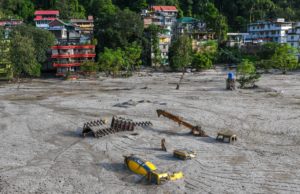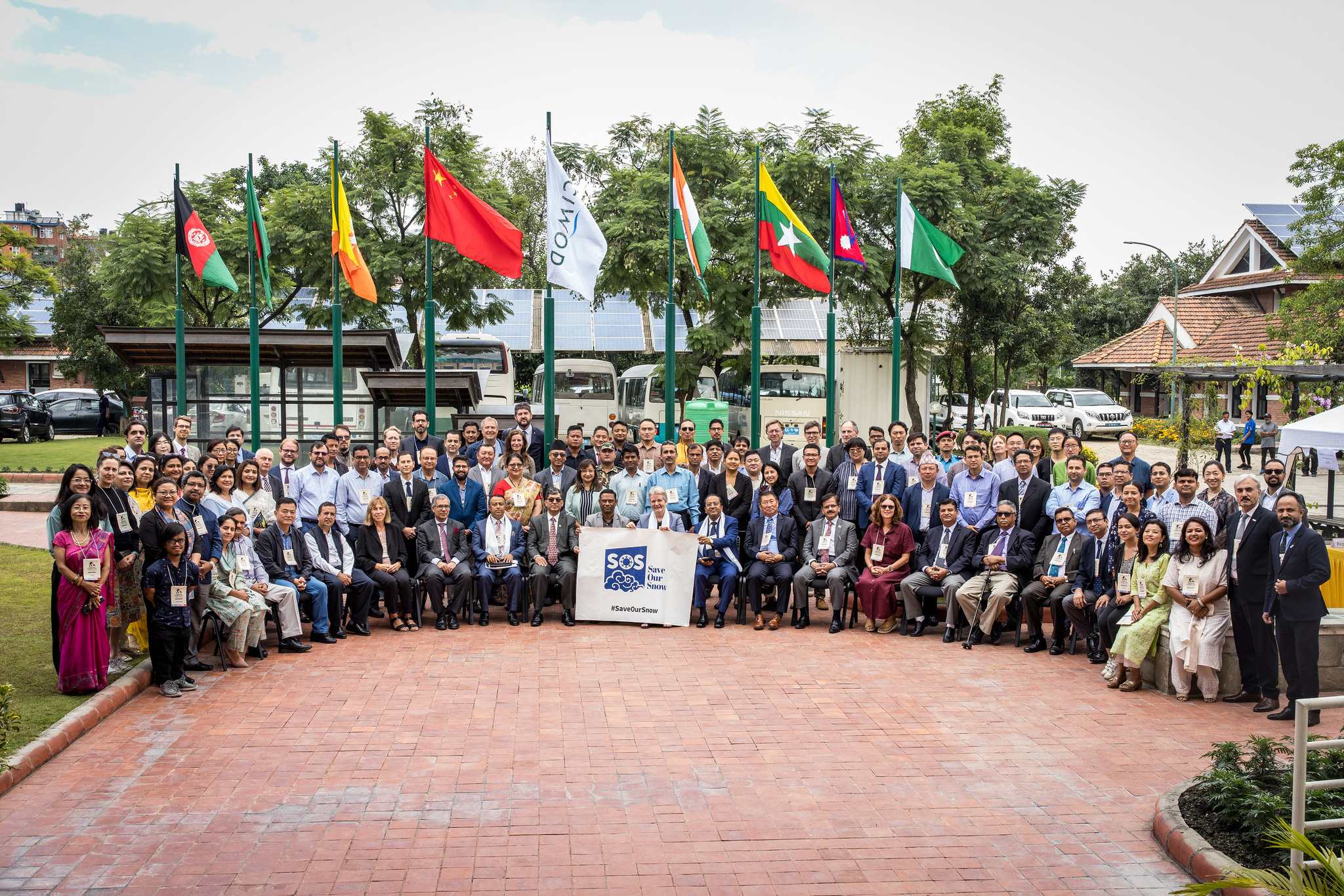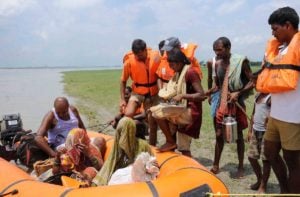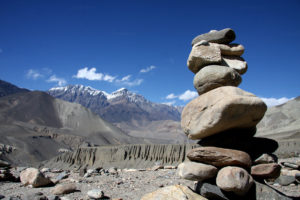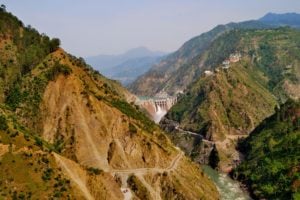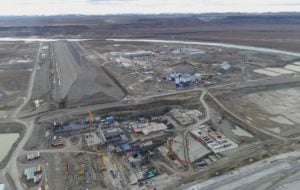On 4 October, the Teesta River floods in the northeast Indian state of Sikkim became the latest grim demonstration of the disconnect between science, policy and Himalayan climate action.
The disaster was triggered by a cloudburst (sudden, heavy rainfall) over the glacial South Lhonak Lake. Scientists began warning of the strong possibility of glacial lake outburst floods (GLOFs) in Sikkim at least as far back as 2001. In 2021, research pinpointed the South Lhonak Lake as being at particular risk of an outburst.
While these alerts lead to renewed attention on South Lhonak Lake, including work to establish an early warning system, the action was insufficient. The consequences are lives lost, property and belongings swept away, and damage to infrastructure and local livelihoods.
A Glacial Lake Outburst Flood or GLOF is a sudden release of water from a lake formed by meltwater from a mountain glacier, which is held back by ice or a moraine (rocks and sediment carried along by the glacier).
These floods can be prompted by an earthquake, avalanche or the accumulation of too much meltwater. GLOFs are often extremely destructive, and are a growing threat in the Himalayan watershed.
With global temperatures certain to rise, major flood events of greater magnitude and frequency will occur, particularly in the Hindu Kush Himalayas (HKH). It is therefore of existential importance that the chasm between science and policymaking is bridged.
But what is behind the current disconnect? Do policymakers lack access to technical studies, or do they simply not read them? Are scientific studies – especially those warning of looming disasters – being adequately targeted and communicated beyond their immediate audiences? And once policymakers and scientists establish common ground, who do we hold accountable for action?
Answering these questions requires forums that bring together scientists, development experts, stakeholders, and policymakers, but adequate platforms are largely absent.
No action without constructive talks
One solution is the HKH Science-Policy Forum, which held its second event, dedicated to the climate and cryosphere crisis, from 21-22 September. The forum is the work of the International Centre for Integrated Mountain Development (ICIMOD). This intergovernmental knowledge hub for the Hindu Kush Himalaya brings together Afghanistan, Bangladesh, Bhutan, China, India, Myanmar, Nepal and Pakistan.
The event hosted around 100 policy makers, scientists, and donor agency and civil society representatives. Organisations representing other mountainous regions, such as the Alps, the Carpathians, and the Arctic, brought valuable advice on procedural and administrative guidelines. Informed by ICIMOD’s June 2023 report, “Water, ice, society, and ecosystems in the Hindu Kush Himalaya”, the forum sketched out what we know of these subjects, what we still need to understand, and which actions to prioritise.
What stood out among the governmental representatives in attendance was an acute awareness of the challenges that the latest science implies. In some cases, policy frameworks to meet these challenges already exist. But in many instances, there is insufficient clarity around responsibilities across ministries, hampering coordination within governments.
Given the growing risks posed by climate disasters to the entire region, the lack of data, strategy and communication coordination across national borders to date is striking.
What also emerged is that government departments are finding it difficult to mobilise the necessary resources for both climate-change adaptation and risk reduction.
To overcome these problems, scientists, economists and policymakers need to push together in conveying the costs of inaction. This event demonstrated there is a common realisation that responses to climate-related disasters in the HKH need to come soon, but also that there is hope of the evidence being turned into action.
What is stalling climate action in the HKH?
Climate action in North America, and increasingly in Europe, is confounded by a partisan, “culture war” framing. According to a 2021 poll, however, trust in environmental science is especially strong in South Asia. Conducted by the World Economic Forum, the survey recorded the opinions of more than 11,600 people from across the globe. It found that 84% of respondents in South Asia trusted “a great deal/a lot” in climate science.
Through regular contact with people living with climate-related disaster risks, such as valley dwellers increasingly ravaged by flood damage, it is clear they support the need to become climate-resilient. What they need convincing of is that those with access to regional evidence and power are serious about taking action.
Instead, climate action in the HKH is being stalled by skepticism over both political will and governmental capacity.
The former obstacle seems to be the easiest to overcome. After listening to leading policymakers from this region gathered at the forum, it really did feel like there is unprecedented agreement today among politicians on what is at stake, as well as the need for action. The key problems are of capacity, and increasingly, the ability to move with speed; major climate impacts in the HKH region are now occurring at such a high frequency that governments, agencies and communities lack the time to adequately respond.
Meeting the urgency of the moment
We have the benefit of a vigorous independent scientific community within the HKH that can provide the evidence and steer the debate. There is global interest in learning from the region, too, which suggests the potential for the HKH to become a global leader in climate action. These factors should be enough motivation for regional leaders to grab this opportunity to shine and reap the benefits for their constituents.
Patience and careful framing are key to any successful policy-related work, but the clock is ticking louder than ever. There is agreement on the main challenges, on the gaps that need to be addressed and even on some of the next steps the HKH needs to take. But we need a feeling of urgency among those regional and global actors who could bankroll the necessary climate adaptation and mitigation strategies. And we must take the public with us, because they will hold these leaders to account at the ballot box.
It is time we take the evidence in front of us and the willingness of policymakers to move ahead, with honest debate across scientific, governmental and civic domains. Not only will this help to harness resources and solutions, but it will engender the much-needed conviction that change is possible.
